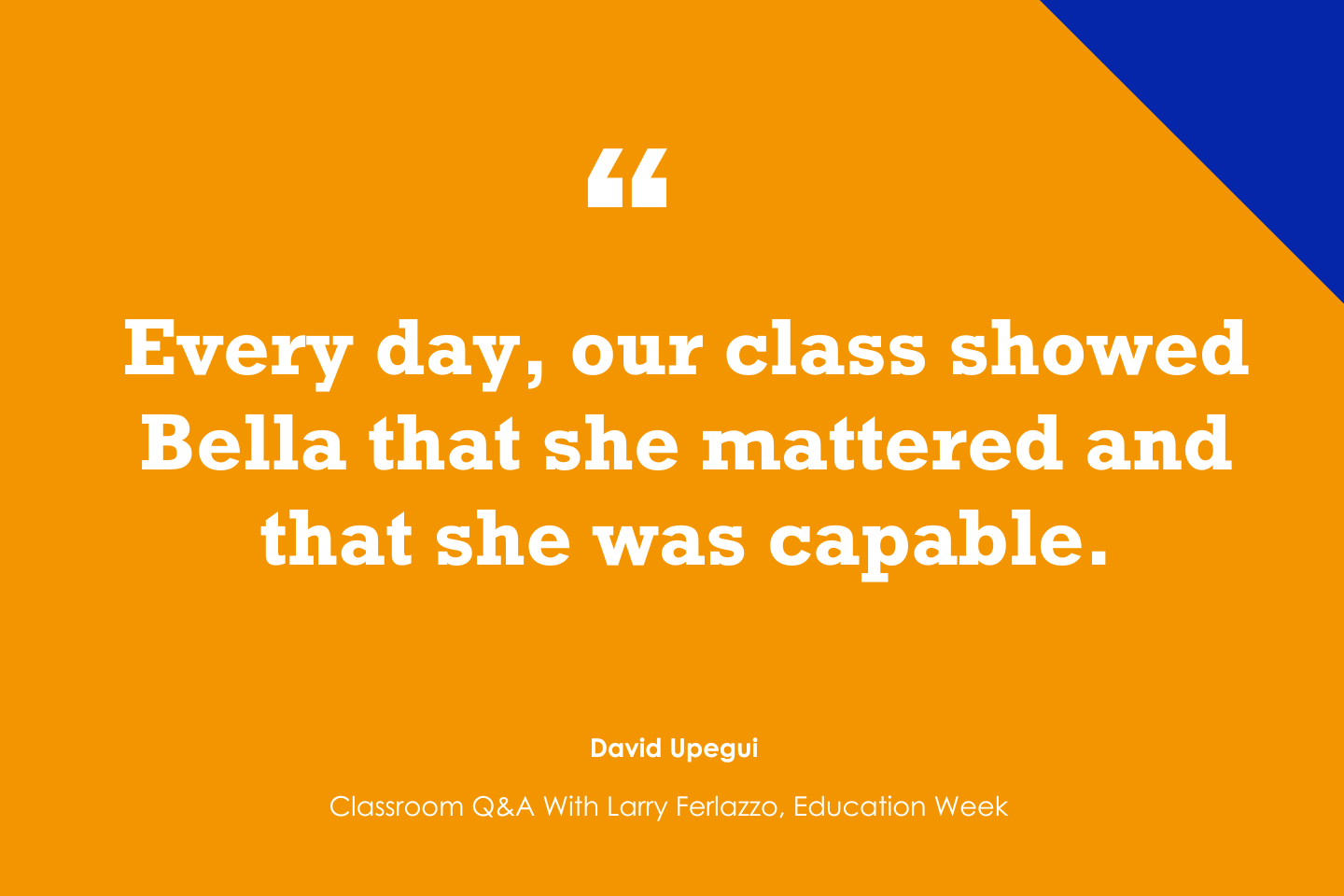Teacher layoffs are likely this fall as $190 billion in federal pandemic aid expires. By one estimate, schools spent a fifth of their temporary funds on hiring new people, most of them teachers. Those jobs may soon be cut with many less experienced teachers losing their jobs first. The education world describes this policy with a business acronym used in inventory accounting: LIFO or “Last In, First Out.”
Intuitively, LIFO seems smart. It not only rewards teachers for their years of service, but there’s also good evidence that teachers improve with experience. Not every seasoned teacher is great, but on average, veterans are better than rookies. Keeping them in classrooms is generally best for students.
The problem is that senior teachers aren’t evenly distributed across schools. Wealthier and whiter schools tend to have more experienced teachers. By contrast, high-poverty schools, often populated by Black and Hispanic students, are staffed by more junior teachers. That’s because stressful working conditions at low-income schools prompt many teachers to leave after a short stint. Each year, they’re replaced with a fresh crop of young teachers and the turnover repeats.
When school districts lay teachers off by seniority, high-poverty schools end up bearing the brunt of the job cuts. The policy exacerbates the teacher churn at these schools. And that churn alone harms student achievement, especially when a large share of teachers are going through the rocky period of adjusting to a new workplace.
“LIFO is not very good for kids,” said Dan Goldhaber, a labor economist at the American Institutes for Research, speaking to journalists about expected teacher layoffs at the 2024 annual meeting of the Education Writers Association in Las Vegas.
Source: TNTP and Educators for Excellence (2023) “So All Students Thrive: Rethinking Layoff Policy To Protect Teacher Diversity.” A more detailed list of teacher layoff laws by state is in the appendix.
The last time there were mass teacher layoffs was after the 2008 recession. Economists estimate that 120,000 elementary, middle and high school teachers lost their jobs between 2008 and 2012. The vast majority of school districts used seniority as the sole criteria for determining which teachers were laid off, according to a 2022 policy brief published in the journal Education Finance and Policy. In some cases, state law mandated that teacher layoffs had to be done by seniority. LIFO rules were also written into teachers union contracts. In other cases, school leaders simply decided to carry out layoffs this way.
Economists haven’t been able to conclusively prove that student achievement suffered more under LIFO layoffs than other ways of reducing the teacher workforce. But the evidence points in that direction for children in poverty and for Black and Hispanic students, according to two research briefs by separate groups of scholars that reviewed dozens of studies. For example, in the first two years after the 2008 recession, Black and Hispanic elementary students in Los Angeles Unified School District had 72 percent and 25 percent greater odds, respectively, of having their teacher laid off compared to their white peers, according to one study.
Districts with higher rates of poverty and larger shares of Black and Hispanic students were more likely to have seniority-based layoff policies, according to another study. “LIFO layoff policies end up removing less experienced teachers, sometimes in mass, from a small handful of schools,” wrote Matthew Kraft and Joshua Bleiberg in their 2022 policy brief for the journal, Education Finance and Policy.
Budget cuts can create some messy situations. Terry Grier, a retired superintendent, who ran the San Diego school district following the 2008 recession, remembers that his district cut costs by eliminating jobs in the central office and reassigning these bureaucrats, many of whom had teacher certifications, to fill classroom vacancies. To avoid additional layoffs, his school board forced him to transfer teachers in overstaffed schools to fill classroom vacancies elsewhere, Grier said. The union contract specified that forced transfers had to begin with teachers who had the least seniority. That exacerbated teacher turnover at his poorest schools, and the loss of some very good teachers, he said.
“Despite being relatively new to the profession, many of these teachers were highly skilled,” said Grier.
Losing promising new talent is painful. Raúl Gastón, the principal of a predominantly Hispanic and low-income middle school in Villa Park, Ill., still regrets not having the discretion to lay off a teacher whose poor performance was under review, and being forced instead to let go of an “excellent” rookie teacher in 2015.
“It was a gut punch,” Gastón said. “She had just received a great rating on her evaluation. I was looking forward to what she could do to bring up our scores and help our students.”
The loss of excellent early career teachers was made stark in Minnesota, where Qorsho Hassan lost her job in the spring of 2020 because of her district’s adherence to LIFO rules. After her layoff, Hassan was named the state’s Teacher of the Year.
Hassan was also a Black teacher, which highlights another unintended consequence of layoff policies that protect veteran teachers: they disproportionately eliminate Black and Hispanic faculty. That undermines efforts to diversify the teacher workforce, which is 80 percent white, while the U.S. public school student population is less than half white. In recent years, districts have had some success in recruiting more Black and Hispanic teachers, but many of them are still early in their careers.
Source: TNTP and Educators for Excellence (2023) “So All Students Thrive: Rethinking Layoff Policy To Protect Teacher Diversity”
The unfairness of LIFO layoffs became evident after the 2008 recession. Since then, 20 states have enacted laws to restrict the use of seniority as the main criteria for who gets laid off. But many states still permit it, including Texas. State laws in California and New York still require that layoffs be carried out by seniority, according to TNTP, a nonprofit focused on improving K-12 education, and Educators for Excellence.
While there is a consensus among researchers that LIFO layoffs have unintended consequences that harm both students and teachers, there’s debate about what should replace this policy. One approach would be to lay off less effective teachers, regardless of seniority. But teacher effectiveness ratings, based on student test scores, are controversial and unpopular with teachers. Observational ratings can be subjective and, in practice, these evaluations tend to rate most teachers highly, making it hard to use them to distinguish teacher quality.
Others have suggested keeping a seniority system in place but adding additional protections for certain kinds of teachers, such as those who teach in hard-to-staff, high-poverty schools. Oregon keeps LIFO in place, but in 2021 carved out an exception for teachers with “cultural and linguistic expertise.” In 2022, Minneapolis schools decided that “underrepresented” teachers would be skipped during seniority-based layoffs. Still another idea is to make layoffs proportional to school size so that poor schools don’t suffer more than others.
This story about teacher layoffs was written by Jill Barshay and produced by The Hechinger Report, a nonprofit, independent news organization focused on inequality and innovation in education. Sign up for Proof Points and other Hechinger newsletters.
The post PROOF POINTS: As teacher layoffs loom, research evidence mounts that seniority protections hurt kids in poverty appeared first on The Hechinger Report.
Teacher layoffs are likely this fall as $190 billion in federal pandemic aid expires. By one estimate, schools spent a fifth of their temporary funds on hiring new people, most of them teachers. Those jobs may soon be cut with many less experienced teachers losing their jobs first. The education world describes this policy with
The post PROOF POINTS: As teacher layoffs loom, research evidence mounts that seniority protections hurt kids in poverty appeared first on The Hechinger Report. Columnists, Elementary to High School, Jill Barshay, News, Teacher Effectiveness, Data and research, poverty, Race, school finance, teachers The Hechinger Report









